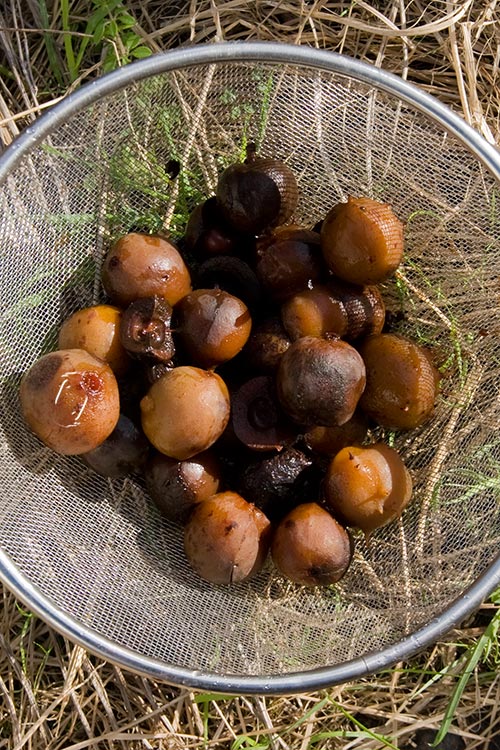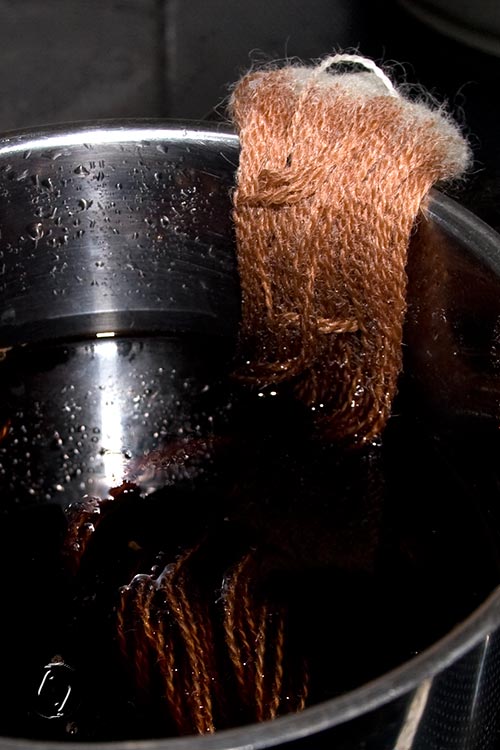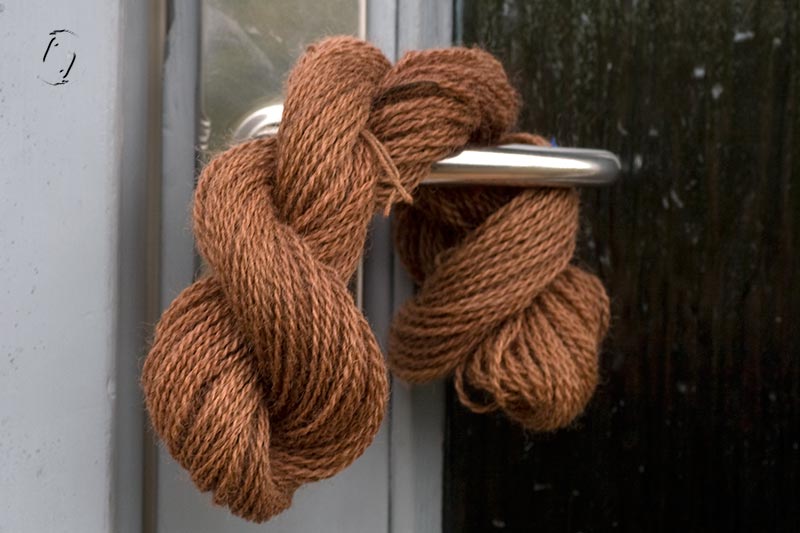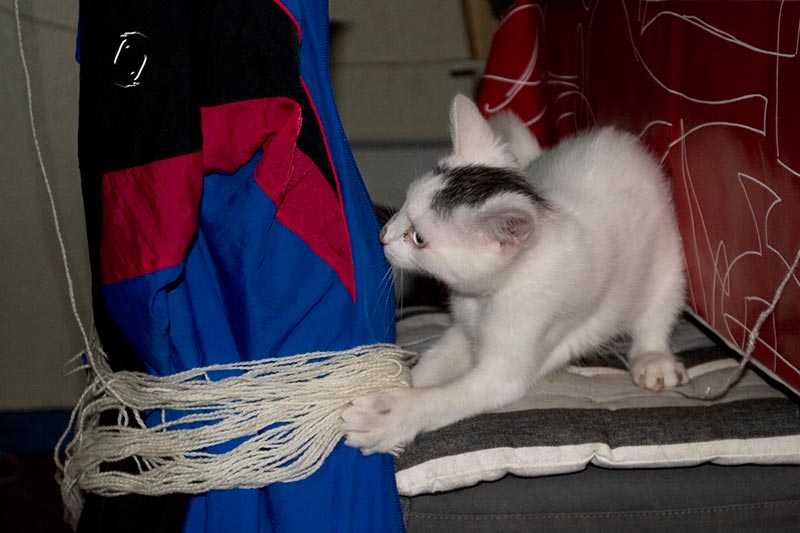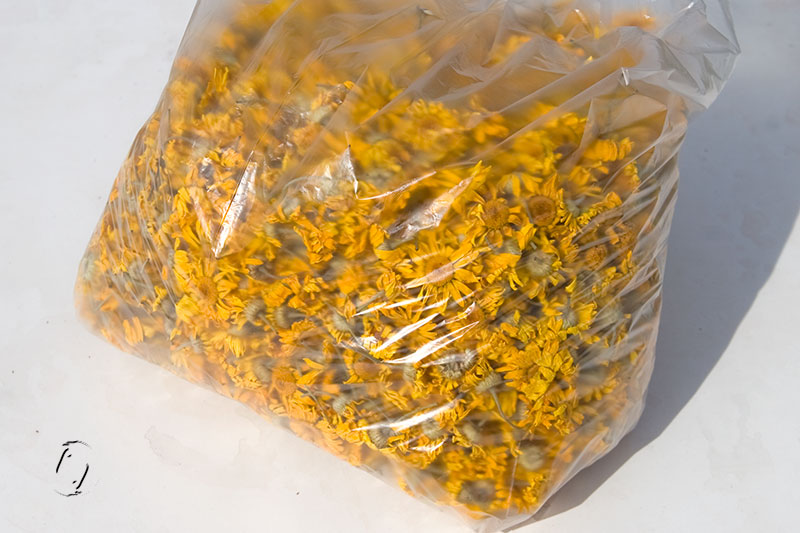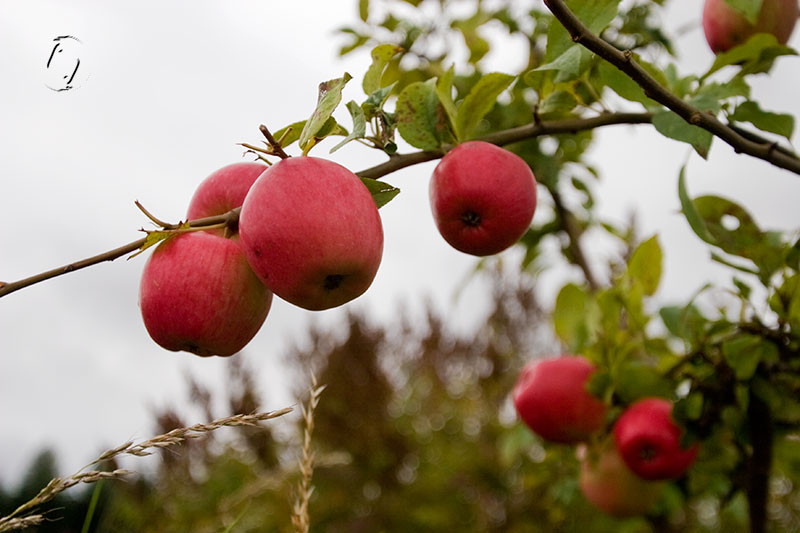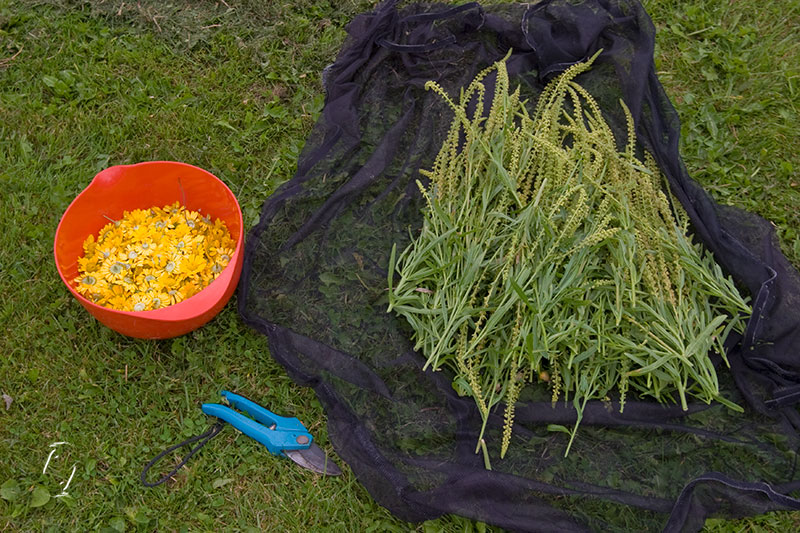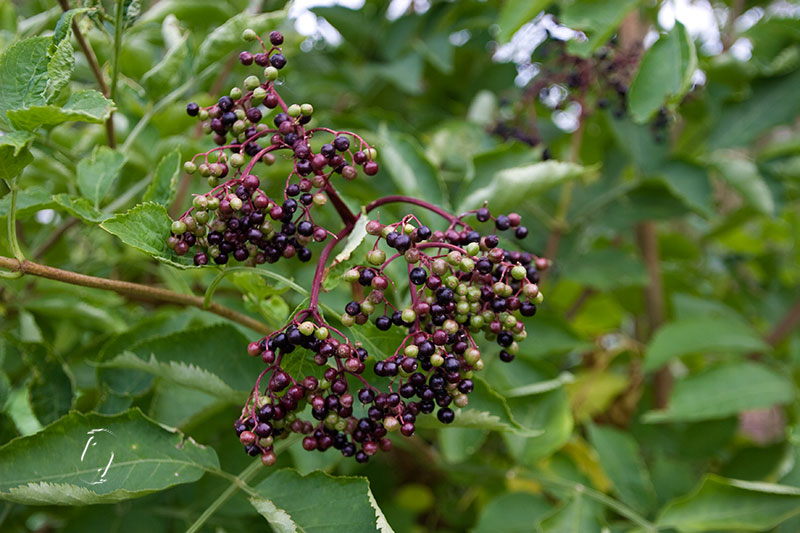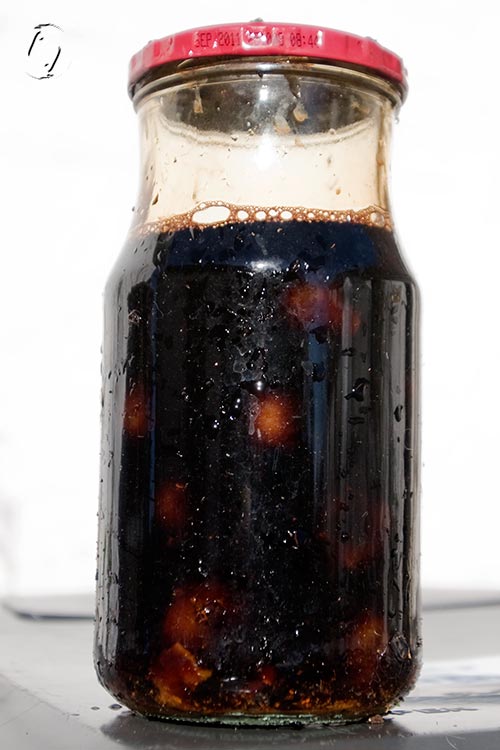 Not having access to walnuts – because I don’t know of any source – and no acorns or elder catkins because there just aren’t any this year – I thought what the hey, I’ll try throwing some green chestnuts in a jar. There aren’t many of those this year either, the paths are usually carpeted this time of year where we walk the dog, but I grabbed a pocketfull.
Not having access to walnuts – because I don’t know of any source – and no acorns or elder catkins because there just aren’t any this year – I thought what the hey, I’ll try throwing some green chestnuts in a jar. There aren’t many of those this year either, the paths are usually carpeted this time of year where we walk the dog, but I grabbed a pocketfull.
First I just put them in water, which went yellow and mouldy. So inspired by Dre (again), I added some ammonia. Boom, instant dark brown. Left it a week or three, I’m not counting.
Next up – will it do anything to yarn?! Should it be mordanted or not? I chose unmordanted for starters. Thinking I could go get another pocketfull in case there was a remote chance it’s working…
I added the liquid and the chestnuts to a larger pot of water and simmered with two 35 g skeins at very low temps – because the first one looked so promising at first dip. I would have just left them in there to dye cold, but the pH was 11, so that’s not a good method for wool.
SO – as we can give full marks for colour on this, what would happen once the colour IS extracted with ammonia (or rather, since the smell is really too much, would pot ash work?), if I then added something to lower the pH again before adding yarn? We need to find out, yeah?
This is what the skeins all look like if they are not rinsed after leaving the dye pot. I’m letting this one sit for a while, then I’ll wet it again. I got the pH down to 7 and added the yarn, left at about 50 C for an hour, steeped overnight.
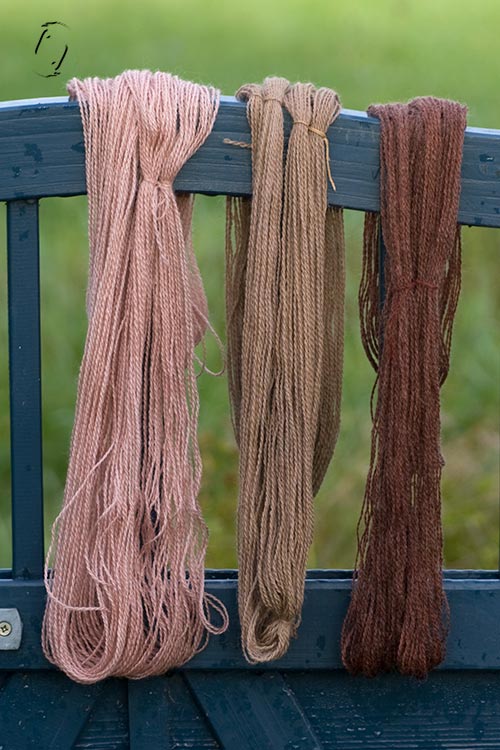 And here they are together, left to right: first bath rinsed, first bath rinsed and dipped in horseshoe bucket, 2nd bath no rinse and still wet. As you can see, the brown bleeds right out as soon as you put the yarn in clear water, giving a dusty pink. One might try dipping that in vinegar to see if it changes…
And here they are together, left to right: first bath rinsed, first bath rinsed and dipped in horseshoe bucket, 2nd bath no rinse and still wet. As you can see, the brown bleeds right out as soon as you put the yarn in clear water, giving a dusty pink. One might try dipping that in vinegar to see if it changes…
I think I need to take the dog for a walk real soon and save the rest of those shells, the few that I can find. What to try: Hot extraction – longterm cold dyeing? How to prevent the dark brown from bleeding. pH testing. Anything else?
ETA Sept. 30th: I rinsed the brown skein, dyed in a neutral pH in cold rain water today. No change. Then I dipped one end in the clean dishwater that was sitting there anyway – no change. So it looks like the brown doesn’t run off if the dyebath is neutral. It’s going to be very interesting to test different pH values with this!!!
â Leave a Comment
Kastanjeskaller
Da jeg ingen agern eller ellekogler kan finde i år og ikke kender nogen med valnøddetræer, tænkte jeg, at den grønne skal omkring kastanjer måske kunne gøre det samme som valnødderne? Der er heller ikke mange af dem i år, normalt skvatter vi rundt i dem på skovstierne hvor vi lufter hund, men nogen er der dog, så jeg tog en lommefuld med hjem og puttede i et glas.
Først kom jeg bare vand i, det blev det gult og muggent af efter et par uger. Så tilsatte jeg salmiakspiritus og bingo blev det mørkebrunt. Men kan det også sætte sig på garnet?! Og eftersom base ikke er godt for uld, kan man efter at have hentet farven ud af skallerne, tilsætte syre, så pH værdien bliver neutral inden man putter garn i? Det må prøves, fortsættelse følger!
Jeg hældte indholdet i en gryde vand med to små fed ubejset garn og simrede noget tid. Tanken var at ikke spilde noget af mit bejsede garn, men evt. prøve en portion mere hvis der skete noget interessant. Det ene fed fik et jerndyp bagefter i hesteskospanden. Et tredje fed blev derefter farvet og lå i blød, efter at have skiftet pH værdien tilbage til 7, det er ikke blevet skyllet bagefter, da farven så render af, så jeg tester lige om det gør en forskel at det får lov at sidde lidt.
Edit 30. september. Det brune garn BEHOLDER sin farve både skyllet i regnvand og i hårdt vandhanevand!

